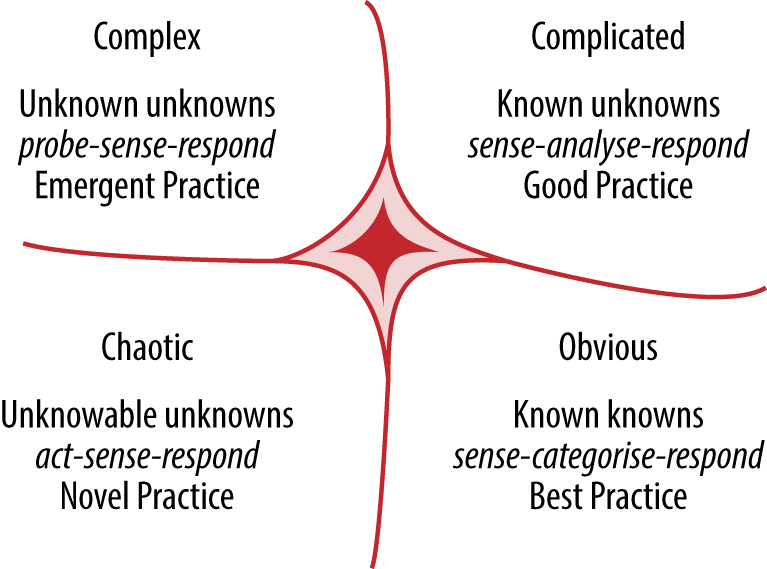Chapter 14. Complex, Adaptive Systems
Ollie picked up the phone in his office. It was Raj on the other end. “Hey, buddy, are you looking at the email I just sent you?” he asked.
“Not yet,” Ollie replied, scanning his inbox for an email from Raj. It was hard to miss, with a subject like “COMPLEXITY!!! SCIENCE!!!” Ollie opened the email and saw a wavy diagram labeled “Cynefin.”

“Dude, I’ve been researching this complexity stuff that we’ve been talking about, and I found a Harvard Business Review article from 2007 by David Snowden and Mary Boone that introduces this framework called ‘Cynefin.’ It’s a way of thinking about complexity. And this framework is not just philosophy—it’s based on complexity science, and it’s practical, it’s usable.”
“Whoa, Raj, slow down. I’m looking at the diagram, but I’m not sure what to make of it yet.”
“All right. What we have here, my friend, is a framework that buckets systems into one of the five domains: obvious, complicated, complex, chaotic, and, finally, unknown.”
“I see the first four... Where is the unknown one?”
“It’s right in the middle. It’s also known as ‘disorder.’”
“OK, got it. Go on.”
“Let’s start with obvious systems. Imagine a fast-food chain restaurant. The deep fryer station. There’s a very well-understood process of how to make fries reliably. It’s documented, and it’s highly optimized. There’s a best practice, which can be taught ...
Get Beyond Blame now with the O’Reilly learning platform.
O’Reilly members experience books, live events, courses curated by job role, and more from O’Reilly and nearly 200 top publishers.

